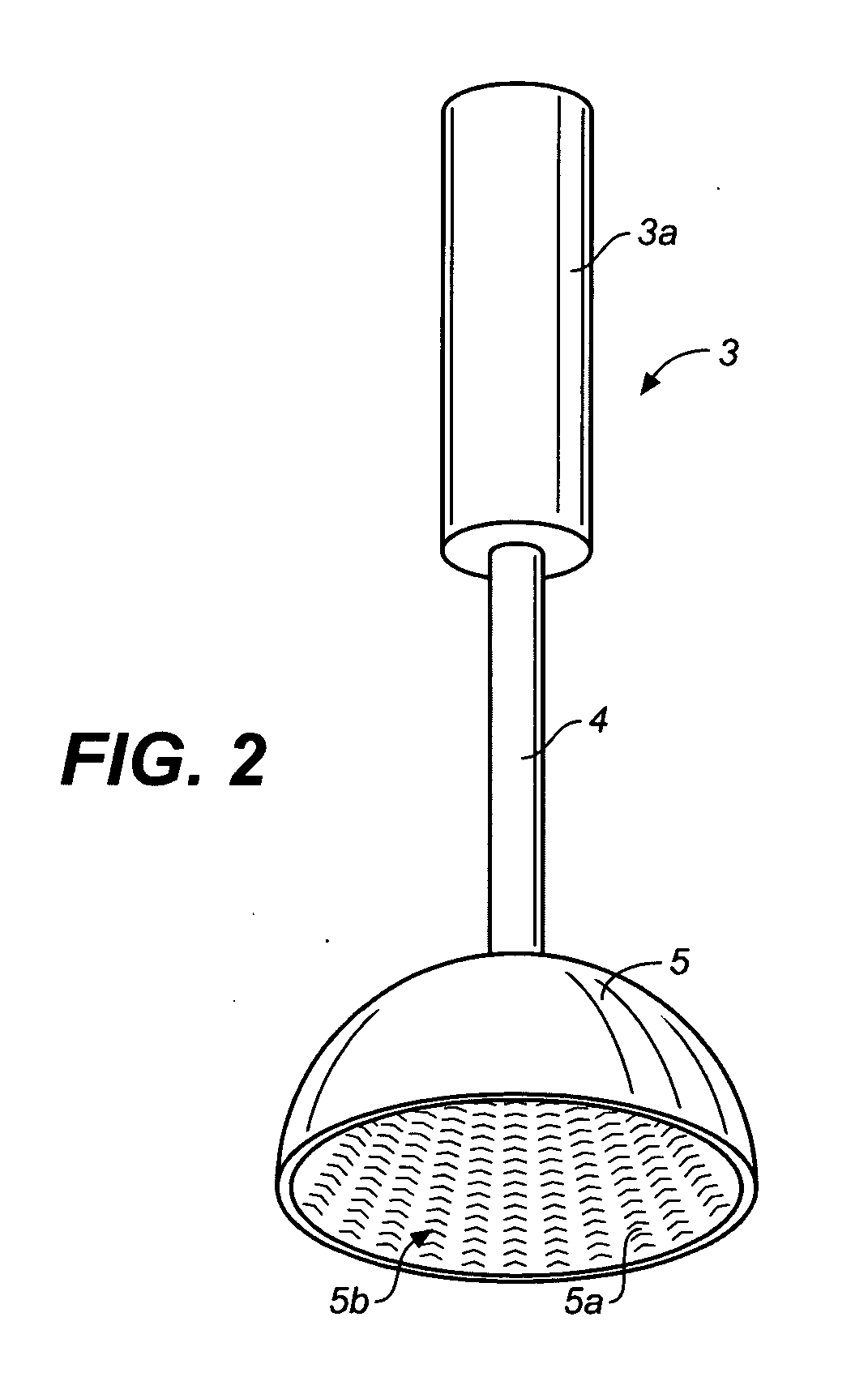Device and method for allograft total hip arthroplasty
a technology of allografts and total hips, applied in the field of allograft total hip arthroplasty, can solve the problems of high failure rate and cartilage degeneration, no insight is offered into the challenges of preparing an osteochondral allograft total hip replacement, and no light or information is provided
- Summary
- Abstract
- Description
- Claims
- Application Information
AI Technical Summary
Benefits of technology
Problems solved by technology
Method used
Image
Examples
Embodiment Construction
[0101]The general anatomical structure of the human pelvis is shown schematically in FIG. 1. This view demonstrates the proximal femur 1 and the acetabulum or hip socket 2.
[0102]FIG. 2 shows the acetabular allograft reamer 3 used in the harvesting of the graft acetabulum. This comprises a driver 3a, which can be pneumatic or electrical, depending on the available sources of power, a reamer drive shaft 4, and a cup-shaped, or reverse hemispherical, reamer 5. The reverse hemispherical reamer contains sharp gratings 5a on its downwardly facing inner surface 5b to remove excess bone and sculpt the acetabular graft to the precise size and thickness needed for the procedure.
[0103]FIGS. 3A-3C are schematic representations of the allograft preparation system (APS) 40 set up in acetabular mode. The APS, in the most essential terms, comprises a base 7 having a vertical support 7a with a horizontal arm 7b extending substantially parallel to the base, and thus to a surface on which the base may...
PUM
 Login to View More
Login to View More Abstract
Description
Claims
Application Information
 Login to View More
Login to View More - R&D
- Intellectual Property
- Life Sciences
- Materials
- Tech Scout
- Unparalleled Data Quality
- Higher Quality Content
- 60% Fewer Hallucinations
Browse by: Latest US Patents, China's latest patents, Technical Efficacy Thesaurus, Application Domain, Technology Topic, Popular Technical Reports.
© 2025 PatSnap. All rights reserved.Legal|Privacy policy|Modern Slavery Act Transparency Statement|Sitemap|About US| Contact US: help@patsnap.com



